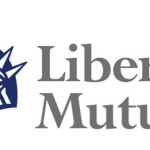For a contractor — and his insurance agent — surveying the general liability insurance landscape, the options can seem overwhelming. Trying to navigate through a vast assortment of carriers and coverages is time-consuming and confusing.
Some contractors try to take the easy way out by selecting insurance that appears — at first glance — to provide coverage for everything. But this approach can lead to a rude awakening when the contractor files a claim and discovers costly coverage gaps. Their insurance doesn’t fully cover their losses because they are under-insured in one area and overinsured in another.
This article focuses on the challenges contractors and their agents face in obtaining adequate general and umbrella liability insurance coverage and explains how they can fill these gaps.
Where to begin?
There are several ways to navigate the insurance marketplace. One method is to approach all potential carriers with submissions for every type of coverage possible, then select the lowest-priced provider. However, those choosing this method may find that some exposures are over-covered, while others are not fully addressed.
A better option is to do some homework early on, request quotes with emphasis on key coverage needs and then perform a cost-benefit analysis on the options.
Do your homework
When buying insurance, as with any major purchase, it’s important to know something about the insurance carrier with whom you’re considering placing the business. Before you request quotes, you will need to do some background checking. Ratings agencies such as A.M Best, Standard & Poor’s and Fitch provide independent analyses of each company’s financial viability.
The National Association of Insurance Commissioners is a comprehensive resource for obtaining detailed information about specific insurance carriers. The association’s Web site, www.naic.org, is a repository of helpful information, including financial reports, listings of the states where each carrier writes business and detailed customer complaint information.
Conducting this research early in the selection process will help ensure a satisfying relationship with the carrier selected.
Develop a risk profile
When you request quotes, the carriers will ask you to provide information about the insured for use in the underwriting process, which will drive coverage terms and conditions.
Typically, insurers request the following information: claims and loss history; descriptions of project types and delivery methods; geographic locations and jurisdictions; risk management goals and objectives; exposure information by class and state; and financial information about the company.
To get the best pricing, it is important that you help build an underwriting case for the company. Instead of just sending out basic claims and loss history information, consider how that information will help an underwriter. Underwriters look at frequency and ask such questions as: Does the insured have an unusual number of slip-and-fall cases? Does that mean their maintenance isn’t very good? Do they have too many subcontractor claims? Does that mean they don’t have the proper contracts, the proper additional insured status?
As you compile this information, think about the coverage concerns. Although most contractors think of loss runs in terms of frequency and severity, it is also important to analyze loss details and trends by asking questions like: What caused the loss? Are there certain loss patterns that should be corrected?
You must also consider exactly what the insured needs coverage for, with business driving this decision. Do they need coverage for residential exposures? Professional liability? Mold? Completed operations?
Understand endorsements
Before the insured signs on the dotted line, carefully review policy details.
Additional insured status is important for a contractor, and it comes in many shapes and sizes. Read and understand the project contract so you know what coverage the insured will need.
Does the contract require naming the owner or general contractor as additional insured? If so, is there a blanket additional insured endorsement? This means that anybody requiring by contract to name them as an additional insured is automatically covered. If it’s not a blanket, is the endorsement set up so that every time the contractor signs a contract, they must tell the carrier to add another party as an additional insured? Many carriers charge an additional premium for each additional insured added.
Another critical area that many contractors and some agents overlook is completed operations coverage. Some insured endorsements offer this coverage while others don’t. The contractor should be very careful in examining the contract signed with an owner. Does it require them to have completed operations coverage? If so, make sure the policy endorsement includes this.
Sometimes an owner will request a specific endorsement that requires a coverage not listed on the contractor’s policy. This puts the contractor in a difficult situation because they’re technically in breach of contract. It is important to understand which coverages are included in the policy and which are not.
In conjunction with this, the contractor also needs to ensure that subcontractors are providing them with the coverage required by their contract with them. It should be expected that they provide the same coverage asked by the owners and general contractors.
It is also important to consider whether defense costs are inside the deductible, within the limits of the policy or outside the limits. How much can the contractor handle out of pocket? A huge legal bill can mean the difference between being in the red or in the black.
Be aware of trends, emerging issues
An effective risk management program must take into account common trends and emerging issues in the industry, such as changes in project delivery methods, relationship contracting and safety.
For project delivery, the trend is for owners to request a single point of responsibility — one contractor who is responsible for design, demolition, environmental, construction and operations. This all-in-one accountability means the contractor must have broader coverage.
Another trend in contract negotiations is the move toward relationship contracting. Owners are doing more prequalification and taking a more collaborative approach when working with contracts. This requires a tailored risk management program, which sometimes means that it’s project specific. It also may mean that the contractor must take on a joint venture partner to get the job. If this is the case, they must have a policy providing coverage as the contractor and a policy covering the joint venture.
The construction industry has been improving safety on the job over the past 10 years. Most contractors involve senior management in the effort to build a culture of safety. As part of this trend, insurance companies are asking contractors to assume higher deductibles and conduct more self-funding and sharing — generally taking on an increased assumption of risk.
Contractors also may need to avoid certain types of exposure. For instance, multi-family residential and mixed-use development are difficult issues for insurance companies to get their arms around. The exposures involved in this type of work are complex and sometimes complicated to underwrite. Contractors may have to avoid such work if they cannot get the right coverage to adequately protect themselves.
Stay abreast of legal developments
When deciding whether to provide coverage, underwriters consider the geographic location and jurisdiction of the project, asking questions like: What is the statute of repose? How does the third-party over action work? How is coverage triggered?
If the contractor is considering a project in a state they have never worked in, they should consider these issues because coverage may be affected. Even if they always work in the same states, it’s important to stay abreast of current legislative issues and support contractor-friendly legislation and tort reform, such as the right-to-repair laws. Every state has a unique legislative and legal environments.
When an insurance company issues a general liability insurance policy for a business, the insurer has agreed to pay costs for a covered liability claim against that company. This claim or lawsuit might be based on an action by their business and, in some cases, it might be based on an action they didn’t take. So, contractors should weigh the value of the coverage they’re seeking and make certain they are sufficiently protected.
Through education and keeping current on insurance developments, agents can help their clients minimize the chance of an unpleasant surprise when they have to file a claim.
Lisa H. Davis is vice president, Business Development for Zurich’s construction business unit.
Topics Carriers Agencies Underwriting Contractors
Was this article valuable?
Here are more articles you may enjoy.


 Everton FC Buyer Accused of Fraud, Double-Pledging Assets in Lawsuit
Everton FC Buyer Accused of Fraud, Double-Pledging Assets in Lawsuit  Michigan Supreme Court Rules Against Couple in Drone Surveillance Case
Michigan Supreme Court Rules Against Couple in Drone Surveillance Case  Liberty Mutual Posts $1.5B Net Income for Q1, Reversing Loss
Liberty Mutual Posts $1.5B Net Income for Q1, Reversing Loss  Insurer Chubb Readies $350M Payout Tied to Baltimore Bridge Collapse
Insurer Chubb Readies $350M Payout Tied to Baltimore Bridge Collapse 


